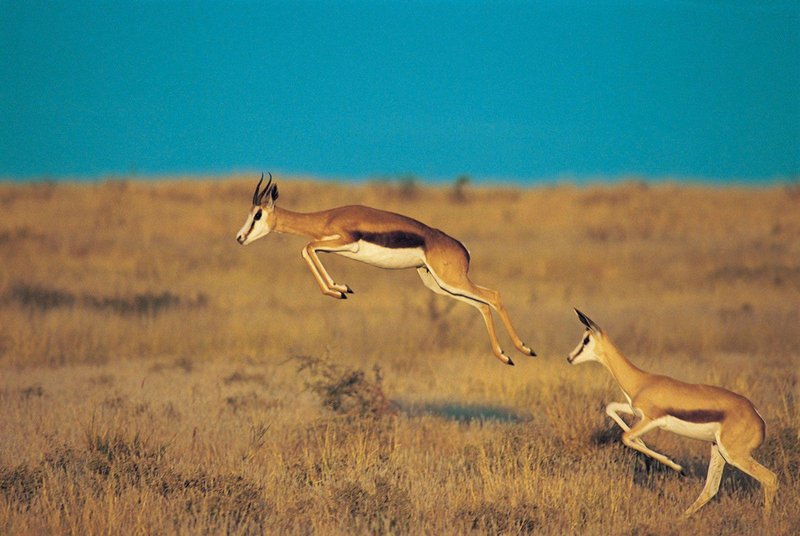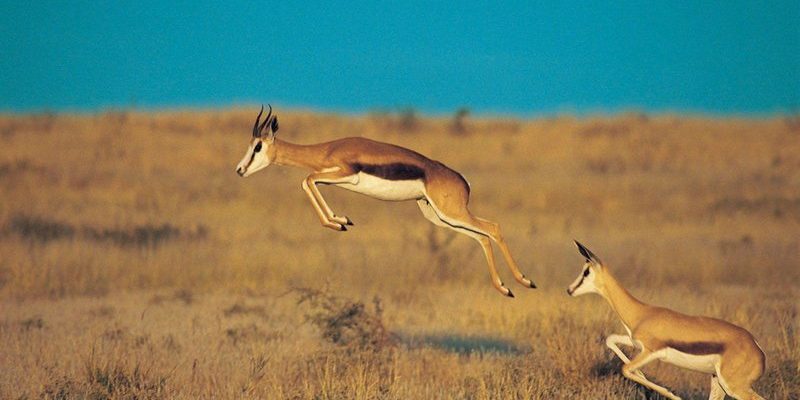
You might wonder exactly how these creatures fit into the bigger picture. Well, let’s dive into the role of the gazelle in its ecosystem and explore why they are so important for maintaining balance in their habitats. From their interactions with predators to their influence on plant life, gazelles contribute far more than we might expect.
Gazelles as Herbivores
Gazelles primarily eat grass and leaves, which makes them essential herbivores in their ecosystem. These animals roam vast areas, munching on vegetation as they go. By feeding on grasses, they help control plant growth — much like a gardener pruning their plants. Now, you might be wondering why this matters.
When gazelles graze, they stimulate new growth of grasses. This not only helps maintain the health of the plants but also encourages biodiversity. In turn, this growth provides food for other herbivores in the area, like zebras and wildebeests. So, in a way, gazelles are like the caretakers of their surroundings, promoting a healthier environment for everyone.
Impact on Plant Life
The presence of gazelles can significantly shape the vegetation in their habitats. With their selective grazing habits, they often prefer younger, tender shoots over older, tougher plants. This pattern allows older plants to flourish while also creating space for new growth.
Additionally, when gazelles graze, they help disperse seeds through their droppings. As they move from one patch of land to another, they carry seeds with them, which can sprout in new locations. This natural method of seed dispersal helps promote a diverse range of plant species, ultimately enriching the ecosystem.
Gazelles and Predators
Gazelles aren’t just passive participants in their environment; they are also a key food source for predators like lions and cheetahs. Think of them as a crucial link in the food chain. By being part of this predator-prey dynamic, gazelles help support the populations of various carnivores.
You might be intrigued by how this relationship works. When gazelles are abundant, they provide ample food for predators, which helps keep their populations stable. However, if gazelles were to decline in numbers, predators would struggle to find adequate food, leading to potential starvation and a drop in their population as well.
Adaptations for Survival
Gazelles have evolved remarkable adaptations to evade their predators. Their incredible speed — some can run up to 60 miles per hour — combined with their agility, allows them to escape quickly. Imagine a game of tag, where the stakes are higher than just winning. Gazelles use quick turns and leaps to outsmart their pursuers.
Moreover, their keen eyesight and excellent hearing help them detect danger from afar. They often graze in groups to keep watch for threats. This social behavior means that while one gazelle is munching on grass, another is scanning the horizon for any signs of trouble.
Social Behavior and Group Dynamics
Speaking of groups, gazelles are quite social creatures. They often form herds, which can range from a few individuals to hundreds. This herd mentality offers safety in numbers against predators. When a threat is nearby, gazelles use a unique set of signals to alert each other. It’s like they’ve developed their own language, allowing them to communicate danger quickly.
Being part of a herd also provides opportunities for social interaction and breeding. Young gazelles learn survival skills from older members, while males often engage in displays of strength and agility to attract females during mating season. This behavior strengthens their social bonds and increases the chances of passing on their genes.
Impact on Ecosystem Balance
The social structures of gazelles contribute significantly to ecological balance. Their grazing habits, predator-prey relationships, and group dynamics all intertwine to create a stable environment. If gazelle populations were to decline, it could lead to overgrowth of certain plant species and affect the entire animal kingdom in that region.
Let’s say, for instance, that the gazelle population diminishes due to habitat loss or hunting. Without these herbivores managing the vegetation, other plant species might dominate, which could push out other herbivores that rely on diverse plant life. This domino effect ultimately disrupts the entire ecosystem and its delicate balance.
Gazelles and Climate Change
Today, gazelles face new challenges, particularly from climate change. As their habitats change, these creatures adapt or decline. Droughts and changing temperatures can affect the availability of food and water for gazelles. When conditions become harsh, their survival becomes increasingly difficult.
Additionally, climate change can impact predator-prey dynamics. If predator populations rise due to a lack of other food sources, gazelles could face increased pressure. This situation highlights just how interconnected everything is; the health of one species can ripple through the entire ecosystem.
Conservation Efforts
Conservationists recognize the importance of gazelles and have initiated efforts to protect their habitats. By creating reserves and promoting sustainable practices, these organizations aim to ensure that gazelles continue to thrive. This not only benefits the gazelles but also helps maintain the balance of the ecosystems they inhabit.
Supporting local communities through ecotourism and education can also play a crucial role. When people understand the importance of gazelles in their ecosystem, they are more likely to engage in conservation efforts. It’s all about fostering that connection between humans and wildlife.
In conclusion, gazelles play an incredibly important role in their ecosystems. From promoting plant diversity to serving as prey for predators, they are vital to the health of their habitats. Their social behaviors, feeding habits, and adaptations reflect the intricate web of life that exists in the savanna.
As we face challenges like climate change, it’s crucial to recognize the impact that loss of gazelles can have on these ecosystems. By supporting conservation efforts, we can help ensure that future generations will continue to enjoy these beautiful creatures and the vital role they play in nature. So the next time you think of a gazelle, remember — they’re not just running around; they’re actively shaping their world.

